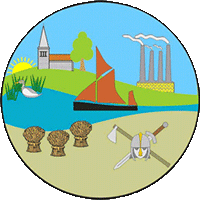The History of Fremasonary
Some historians trace Freemasonry to the Tenth Century, B.C., during the building of King Solomon’s Temple. Available records reveal that Freemasonry was introduced into England in 926 A.D.
Freemasonry is directly descended from associations of operative masons – the cathedral builders of the Middle Ages – who traveled throughout Europe employing the skills of their crafts.
In the 17th Century, when cathedral building was on the decline, many guilds of stone-masons, known as “Operative Masons” or “Free Masons,” started to accept as members those who were not members of the masons’ crafts, calling them “Speculative Masons” or “Accepted Masons.” The tools and objects that were employed by operative masons are symbolically used today to help teach moral lessons.
It was from these groups of “Accepted Masons” that the Fraternity as we know it today developed. The first Grand Lodge was formed in London, England, in 1717. Today, there are more than 150 Grand Lodges in free countries of the world, with a membership of more than 5 million. In the United States, there are 50 Grand Lodges.
